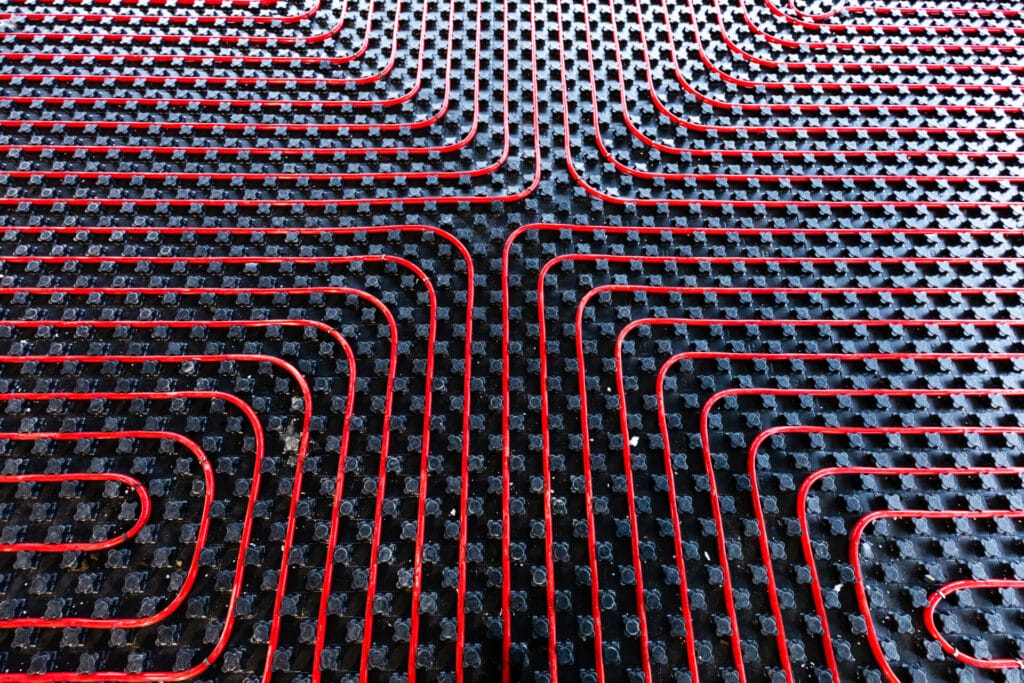
BY DANIELA GIRALDO – APRIL 25, 2024

In the world of sports and landscaping, innovation continually drives progress. One such innovation that has been gaining traction in recent years is heated turf. Revolutionizing traditional turf management practices, heated turf offers a myriad of benefits that extend beyond the realm of sports into landscaping and environmental sustainability. In this comprehensive guide, we will delve into the intricacies of heated turf, exploring its advantages, applications, and the future it holds.
Heated turf, also known as heated synthetic turf or heated artificial grass, incorporates advanced heating elements within the turf system. These heating elements, typically composed of electric coils or radiant heating technology, are strategically installed beneath the turf surface. By generating controlled heat, heated turf effectively mitigates issues associated with cold weather, ensuring optimal playing conditions year-round.
Enhanced Playability: Cold weather often poses significant challenges for outdoor sports, affecting turf conditions and player performance. Heated turf eliminates these obstacles by maintaining an ideal playing surface, regardless of external temperatures. Athletes can now train and compete without disruptions caused by freezing conditions, reducing the risk of injuries and enhancing gameplay.
Increased Utilization: Traditional turf fields often experience limited use during colder months due to freezing temperatures and poor turf quality. Heated turf extends the playing season, maximizing field utilization throughout the year. This increased availability not only benefits sports teams but also opens opportunities for recreational activities and community events, fostering a vibrant outdoor culture.
Improved Safety: Cold and damp conditions can render turf surfaces slippery, posing safety hazards for athletes and participants. Heated turf prevents the accumulation of ice and snow, ensuring safer playing conditions. By reducing the risk of slips, falls, and injuries, heated turf prioritizes player safety and well-being, instilling confidence in both athletes and spectators.
Cost-Efficiency: While the initial investment in heated turf may seem substantial, it offers long-term cost savings compared to traditional turf maintenance. By eliminating the need for constant reseeding, fertilizing, and snow removal, heated turf reduces ongoing maintenance expenses. Additionally, its extended lifespan and increased field utilization contribute to a higher return on investment over time.
Sports Facilities: Heated turf has become a game-changer for sports facilities, ranging from professional stadiums to community parks and school grounds. Football, soccer, rugby, lacrosse, and other outdoor sports can now be played year-round, providing athletes with consistent training opportunities and competitive environments.
Landscaping and Urban Design: Beyond sports, heated turf finds applications in landscaping and urban design projects. Public parks, green spaces, and rooftop gardens can benefit from heated turf installations, creating inviting environments for recreational activities and social gatherings. In colder climates, heated sidewalks and pathways enhance pedestrian safety and accessibility during winter months.
Eco-Friendly Landscaping: Heated turf aligns with sustainable landscaping practices by reducing the reliance on chemical treatments and water consumption associated with traditional turf maintenance. Moreover, its ability to mitigate the urban heat island effect contributes to environmental conservation efforts in densely populated areas. By promoting green spaces and biodiversity, heated turf supports ecosystem health and resilience.

Smart Turf Technology: The integration of smart sensors and automation systems enables real-time monitoring and management of heated turf conditions. Predictive analytics and machine learning algorithms optimize heating patterns based on weather forecasts, usage patterns, and turf health indicators, ensuring efficient operation and energy conservation.
Renewable Energy Integration: Advancements in renewable energy technologies, such as solar and geothermal systems, offer sustainable solutions for powering heated turf installations. By harnessing clean energy sources, sports facilities and landscaping projects can minimize their carbon footprint and contribute to global efforts to combat climate change.
Customized Turf Solutions: Innovations in turf materials and heating technologies allow for tailored solutions to meet specific performance requirements and aesthetic preferences. From elite sports surfaces to decorative landscapes, heated turf can be customized to suit diverse applications and design aesthetics, offering flexibility and versatility in implementation.
Heated turf represents a paradigm shift in turf management practices, offering unparalleled benefits for sports, landscaping, and environmental sustainability. As technology continues to evolve and adoption rates rise, heated turf is poised to redefine outdoor recreation and urban design standards worldwide. By unlocking the power of heated turf, we pave the way for a future where every season is game season, and outdoor spaces thrive year-round.
Share this post:
Check other topics that may help you get more insights for your project:





